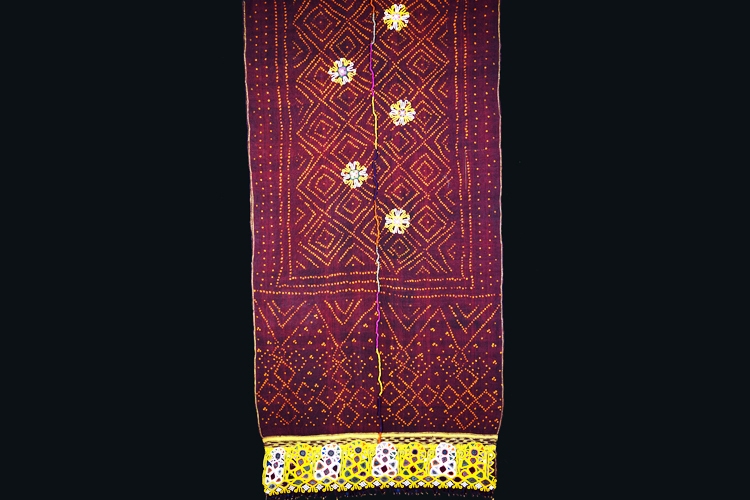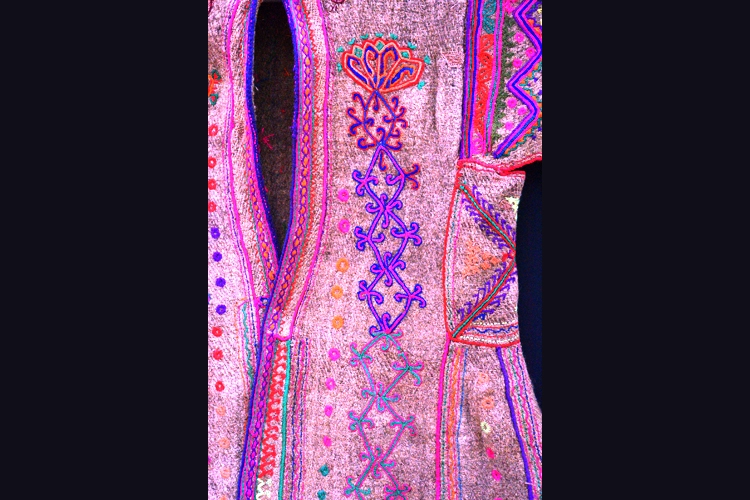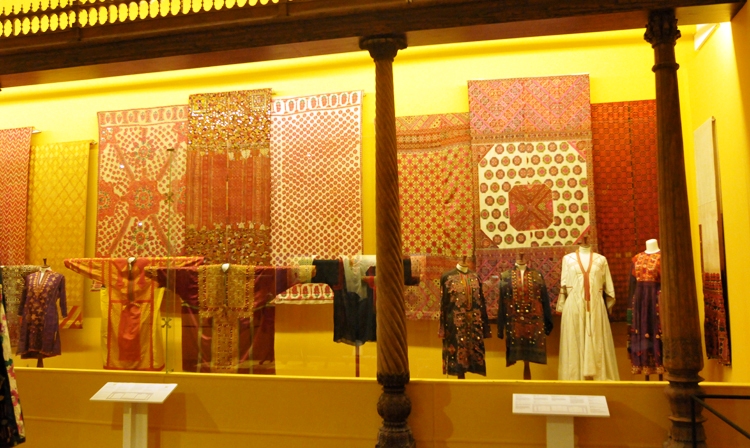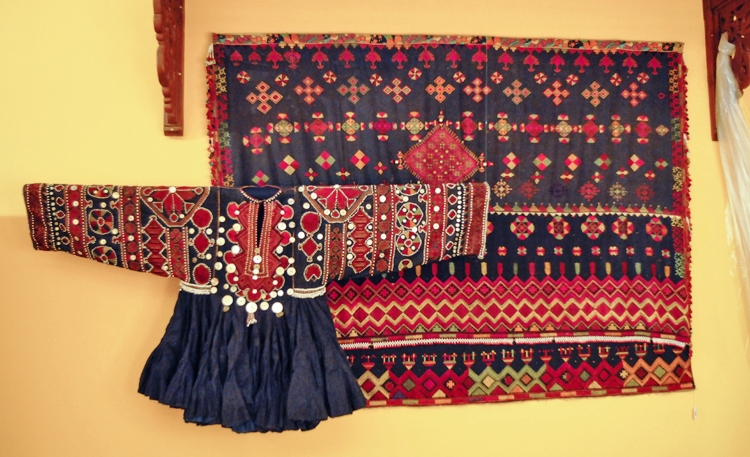Written by: Javeriah Farrukh
Posted on: June 16, 2015 | 
The curator, Nasreen Askari (C) with designers Faiza Samee (L) and Sonya Battla (R)
The exhibition has been divided into three categories of fabric, namely painted/tie-dyed fabrics, woven fabrics and embroidered fabrics. It displays across seven galleries its vast collection of textiles from the Indus Valley, right up to the mountains of the North. The most striking feature of the gallery is the beautiful, almost effortless, transition one witnesses between the dresses of the traditional and modern eras. Commenting on the exhibition, Askari told Youlin: “Our dress heritage has experienced a transition, in that dresses are now more personal than they were 7,000 years ago. Traditional textiles from the Indus Kohistan, Sindhi, and Balochi traditions, among others, depict the identity of those cultures. Today’s dress, however, is the manifestation of the more personal, less communal nature of fashion that fuses elements from across these dress traditions into one piece,” she added.
The exhibition opens with a warm, dimly lit gallery honoring the master craftsmen of Pakistan. With a rhythmic hum of the Sindhi flute in the background, one witnesses the ateliers of the craftsmen of ajrak, a red-and-blue fabric with floral and geometric block-print patterns, the bandhani, a tie-dyed fabric, and khes weaving, a traditional Sindhi spread-weaving craft on wooden pit looms. This introduction to the master craftsmen sets the perfect prologue to the gallery that follows, of painted, printed and tie-dyed fabrics displayed in an elaborate hallway. Sindhi ajraks, women’s tunics, skirts, shawls and ceremonial garments are all on display, narrating stories of their indigenous culture through their vibrant prints and eccentric patterns.

The colours of Sindh slowly fade into the distance and the hallway opens into another gallery dedicated to the Northern Areas. Titled “Where Mountains Meet”, this gallery displays woven fabrics from Hunza, Gilgit, Balochistan, Chitral and the surrounding regions. Tailored for the climate of these places, these garments are warm, in subtle hues, and made from densely woven and felted woolen cloth, with embroidery, columns, vegetal forms, and ram’s horns. They trace some of their influence in design to Central Asian culture.

In the far corner of this gallery, like a hidden jewel, is pitched the gidaan, a nomadic Balochi tent woven from goat’s wool. The dull glow of a lantern lights the inside of the gidaan, revealing a burst of colours from the nomadic items of necessity inside the tent. The backdrop from here on changes quite drastically as one enters the next gallery, displaying carpets from around Pakistan. Aptly titled “The Flying Carpets”, this gallery has a delightful collection of hand-woven rugs, carpets and centerpieces from Balochistan, Lahore, and other areas of Punjab.
A distinctive feature of the exhibition is the way every gallery fuses into the next. Some are shocking contrasts, while others are simply an extension of the previous theme. The main gallery leading out of the carpets display, for example, is a large hall, with high ceilings and delicate glass casings that encapsulate the visitor in all their grandeur. From left to right, one can see rich embroidered tunics, and shawls adorned with shells, coins, beads and metals. This collection brings together hand-embroidered pieces from ancient cultures of Balochistan, Sindh and Khyber Pakhtunkhwa.


Still mesmerized by the beauty of the garments, as the visitor exits the main gallery and enters the last one, a more breathtaking sight awaits – the evolution of traditional dresses into contemporary outfits. To highlight the contemporary dress philosophy of Pakistan, creations by the country’s top designers including Bunto Kazmi, Nilofer Shahid, Sonya Battla, Faiza Samee, Khaadi, Maheen Khan, Shamaeel Ansari, Rizwan Beyg, and Sana Safinaz, are displayed. The outfits represent an amalgamation of elements from all dress traditions of the country and modern cuts. The most striking piece from this collection is Maheen Khan’s “Koya”, which takes up an initiative to revive Pakistan’s fading silk-weaving craft.
Dazed by the scintillating beauty of the designers’ pieces, the visitor makes his way out, and there stands the final piece of the exhibition – a dramatic Sana Safinaz monochrome gown. A befitting conclusion to the exhibition, the gown is a stark contrast to designs of earlier periods. However, closer inspection of the Ottoman period inspired motifs, floral patterns and embroidery on the fine silk and organza trail reveals that it in fact embodies aspects of its ancestors. The monochrome gown finale is not just another beautiful piece at the exhibition; it is a statement – one that compels the visitor to wonder about the sublime transition of the dress heritage of Pakistan, and what its future would hold.
You may also like: